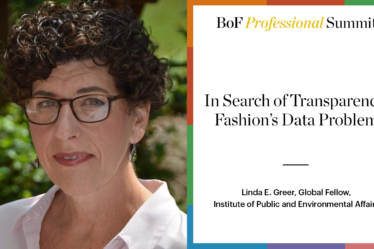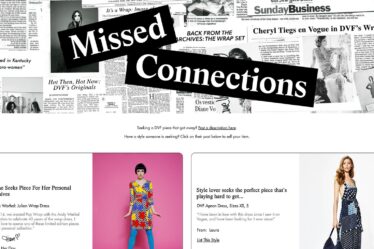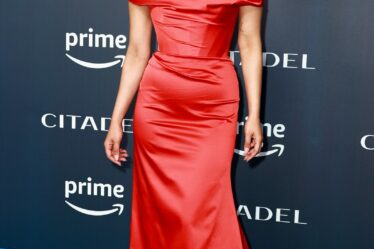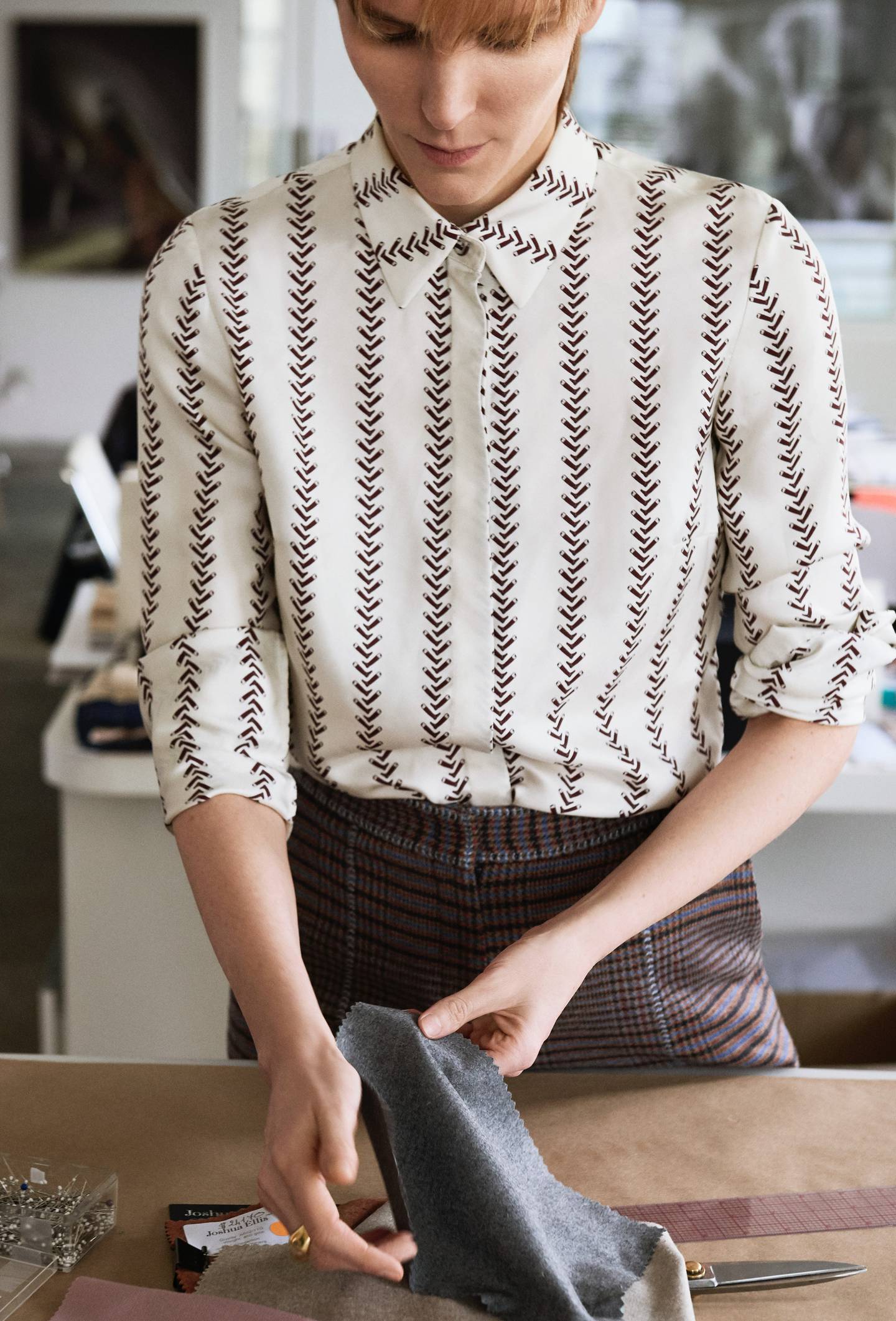
Discover the essential tools for successful entrepreneurship in BoF’s Start-Up School: a resource comprised of a practical guide on topics ranging from fundraising and finding product-market fit to planning an exit; along with supplemental tools, templates and frameworks. Become a member to access.
NEW YORK, United States — Gabriela Hearst has no filter. “I don’t know if this is too much information but… for Valentine’s Day, my mom showed me the place I was conceived,” Hearst says one day in February, whipping out her phone. On the screen is a verdant riverside patch of Uruguay, the country where the designer was born and raised. “I was made there.”
Hearst is the kind of person who really cares about where and how things are made. She goes on to explain the details — there was an overnight fishing trip — and why this revelation, no matter how funny or awkward on her mother’s part, was so meaningful to her. “I do really think that this is my soul,” she says, going on to suggest that her journey from Uruguay to New York has followed the Buddhist concept of dharma — or cosmic law and order — and that every step of the way allowed her to “crystallise the vision” of her namesake womenswear label more precisely.
From Buddhism to fashion. It’s a stretch. But, then again, her mother is a practising Buddhist and Hearst says she uses daily meditation for support as she builds her label. “The pressure that designers feel is a bit similar to the pressure of an athlete. It’s kind of a self-imposed torture; a competition with others but also a competition with yourself,” she says. “And when you’re a mother of three children it’s not like I can be downing wine bottles. So, I have to find alternative ways of not going completely freaking nuts.”
In an industry built on smoke and mirrors, Hearst’s honesty is refreshing. Especially given the pressure she must be feeling. On a Monday in mid-January, the trajectory of Hearst’s business changed forever. Around 8am New York time, a press release announced that LVMH — the French luxury conglomerate that owns more than 70 brands, including Louis Vuitton and Dior — was making a small, but significant, minority investment in the label through its LVMH Luxury Ventures arm.
Gabriela Hearst in her studio | Photo: Danilo Scarpati
The fund, which bets on “young luxury” companies, has also invested in French apothecary Officine Universelle Buly and sneaker reseller Stadium Goods, which has since been sold to Farfetch at a $250 million valuation. But LVMH’s interest in Hearst’s label was perhaps most significant not because of the sums involved — the company declined to reveal how much it had invested in the label, but the typical deal size at its Luxury Ventures arm is between €2 million and €15 million — but because of the founder herself.
Yes, Gabriela Hearst is the wife of Austin Hearst, the publishing heir, whom she married in 2013. But more importantly, she has developed her label — known for its feminine suiting, elegant knits and thoughtful handbags — in New York at a time when the very concept of “American luxury” can feel like an oxymoron, with many leading players prioritising quarterly results over quality.
Julie Bercovy, the executive who runs LVMH Luxury Ventures, said via email that the fund was interested in Hearst, whom she called a “highly creative woman,” because of her “clear mission of creating luxurious, modern collections, while staying true to her values and pushing forward the causes she champions… she is involved in every aspect of the business, from driving sustainability through the supply chain to product mix, distribution and more.”
Meanwhile, the same morning the LVMH investment was announced, Meghan Markle, the American actress, turned British royal, turned money-making machine for fashion brands, was once again spotted carrying Hearst’s “Nina” bag, an origami leather ball folded up like a Kouign-amann pastry.
The most important lesson for me is nothing in this world happens without hard work, absolutely nothing
And while the queries came rolling in, Hearst did not sit for interviews or celebrate with a champagne lunch. Instead, she spent the day recycling hangers. “I was in our storage room, all day, organising,” she says with a certain breathless urgency, walking up to the Astro Gallery of Gems on Lower Fifth Avenue on an eerily warm winter afternoon. Hearst is apparently not the kind of person who can let herself enjoy unseasonably high temperatures induced by fearsome climate change, or the prestige that an injection of capital from the likes of LVMH can bring to a fledgling business like hers.
Hearst is serious and sincere about playing the long game. “The most important lesson for me is nothing in this world happens without hard work, absolutely nothing,” she said. “Take the humiliations, take the falls, take the snubbing, and know that, if you believe in it completely, one day it will happen. But when it happens, just continue on the same path, don’t get fooled by the glitter. Because at the end of the day it’s a job. I’m a worker.”
She founded her namesake label two years after her marriage, with significant seed investment from her husband, while phasing out Candela, a mid-market line that she started with two partners and just $700 in 2004, long before Austin was in the picture. (Candela still operates as a private-labelbusiness, but she is not involved.) She had moved to New York in 2000, and two years later began assisting the designer Kara Janx. When she launched Candela, she was running sales at a showroom, so she knew what buyers wanted.
But she also knew it was over for Candela the day Zara opened its doors in the retail space in her office building. “I was like, ‘This is impossible, I will never ever be able to compete with this,'” she said, snapping a sesame-crusted breadstick in half during lunch at Sant Ambroeus in the West Village. For trend-driven contemporary brands like Candela, getting customers to pay more than fast-fashion prices for average quality was increasingly difficult. “There was a point when I thought, ‘How much more can I lower the quality?’ My heart was breaking.”
In 2011, just as the bottom was falling out of the contemporary market, Hearst’s father, a self-made Uruguayan rancher, passed away. She inherited one of his properties and, as Hearst put it, her “worlds collided.” She knew that if she was going to keep doing fashion, she wanted to build something sustainable: something that could last. There was less price sensitivity in luxury goods, especially if their distribution was managed carefully. She knew that they could be made in a more responsible way, too. So, she called Julie Gilhart, a fashion consultant who has developed a reputation for working with brands to reduce their environmental footprints.
Hearst made this as a pillar of the house she would build. She would waste nothing. Every bit of fabric would be used, every hang-tag considered. She developed a fondness for recycled cashmere, believing her customer would be happy to wear leftovers as long as they were good. She obsessed over biodegradable materials. This, despite a lack of evidence that sustainability credentials drive sales.
My favourite thing about luxury is also the hardest thing about luxury
“People tell me, ‘Oh you shouldn’t talk so much about sustainability.’ But for me, personally, there’s no other pressing thing happening in the world,” she said, mentioning a February 2019 article in The Guardian detailing how the mass extinction of insects could result in the “collapse of nature.”
“I can’t justify what I do without having that as a core value,” she said.
Gabriela Hearst, the designer’s name by the time she started the line, would be about using the best materials, working with the best factories and creating a sense of specialness — especially around the bags — so that the business could sustain, in the truest sense of the word, for longer than a decade.
“My favourite thing about luxury is also the hardest thing about luxury,” she said. “In the contemporary market you design something and you send it to the factory. In luxury, every single trim is your decision. I am hands-on every single step of that garment. What are the buttons that we’re choosing? What’s the lining that we’re choosing? How are we interlining the pockets? I’m much more of the philosophy — because of how I grew up in Uruguay, of having less but making it good.”
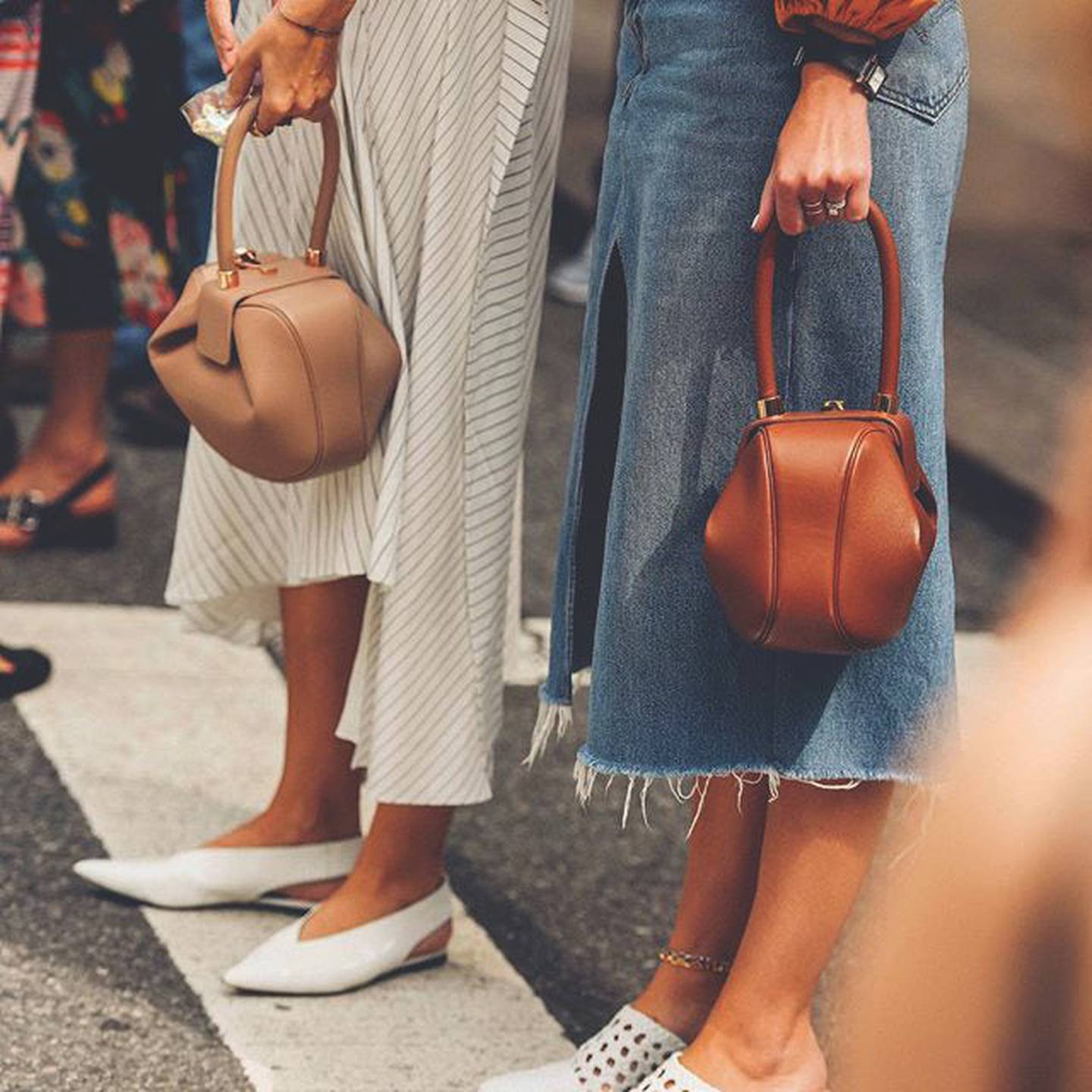
he Gabriela Heart “Nina” bag | Photo: Tommy Ton
In just two years, the company crossed over into profitability. And three years in, 2018 revenues were just under $20 million, according to sources familiar with the company’s finances. Hearst said she could have grown more quickly, but she feared becoming too reliant on sales of handbags, which already make up 50 percent of the business. Currently, half of the revenue comes from direct-to-consumer sales — although that number is set to increase in 2019 — and half is made outside of the US, indicating that, with physical retail and further expansion into product categories beyond bags and ready-to-wear, including fine jewellery and home, there is still opportunity to grow.
“I tell my team all the time, we do not have to bullshit. These are my values. This is where I come from. This is what we’re doing,” she says. “There are materials where we cannot even do a price comparison. My head of sales comes to me to do a price comparison for a pleated dress that’s made of cashmere gauze; there’s nothing in the market where they’re doing a pleated dress of cashmere. Maybe there’s cotton, maybe there’s viscose but not a cashmere gauze. That type of thing makes it very special. That’s our level of differentiation.”
It also helps that her last name is recognised the world over. When the designer was establishing the company, she thought about using her maiden name, Perezutti, instead. But Hearst isn’t one to pretend that her privilege doesn’t exist — or to be embarrassed of it.
“When we were thinking of launching the brand and calling it Perezutti, my maiden name, I had a good friend who said to me, ‘I love you, and I love your maiden name, but come on. Nobody can pronounce it and they’re going to write it wrong,’” she says. “Gabriela Hearst was the most honest approach. I’m Gabriela, he’s the Hearst. He’s the investor. To honour the work that his family has done for all of these years, you can’t do something shitty.”
You can have the investment, but you have to deliver.
Austin, a television and film producer who has lately taken an interest in ventures that deal in the business of mindfulness, remains her primary investor. But this wasn’t a free-for-all. “I had a very set budget and the resources were limited,” she says. “This was a risk. If it didn’t work on the first season, bye-bye my second chance.” But she also acknowledges that, for example, she could afford to hire an art director she respected, Peter Miles, to create a brand image that was in line with her vision.
“It’s a bit like Formula One driving or tennis,” she says. “You can have the investment, but you have to deliver. I am very grateful and very lucky, and I take even more responsibility because of it. I constantly have to prove myself.”
While Hearst’s privilege created an advantage, it certainly didn’t guarantee anything. Plenty of wealthy people start fashion lines resulting in nothing much. Hearst has earned respect by making clothes that sell. Her take on the suit — slim, but not too skinny, rendered in soft makeup shades of silk shantung or double-faced cashmere — hit just the right spot between corporate and costume, becoming a fashion editor favourite. “The first season, our sales rep at the showroom that we had at the time said, ‘Don’t bother doing suits,’” Hearst remembers. “Thank god I’m old enough now and I don’t listen to people.”
“The sensibility of the clothes is unique,” says Tiffany Hsu, fashion buying director at MyTheresa, the multi-brand luxury e-tailer owned by Neiman Marcus Group, who also served on the judging panel when Hearst won the International Woolmark Prize in 2017. “I’m seeing more and more customers who are happy to invest in a piece that feels more adult. It doesn’t matter what season it’s from if it’s beautiful.”
In 2018, Hearst hired her first chief executive, Giuseppe Giovannetti, whose time at Bottega Veneta and Tomas Maier made him a good fit to assist in developing a quiet luxury label. But she remains involved in every aspect of the business. “It’s been a goal of mine for over two decades to really develop myself creatively, executively and administratively,” she said. “I find that my brain needs all of these areas to work efficiently. I don’t want it to work in silos, I want everything to talk to each other.”
Her first bricks-and-mortar store, which she opened in November 2018 adjacent to the Carlyle Hotel, was the beginning of what she hopes will be an extensive store network — starting with openings in London and Hong Kong in 2019 — where she can sell her entire collection, including handbags, which aren’t really sold at wholesale. (Bergdorf Goodman, where she recently opened a shop-in-shop, carries one exclusive style, for a limited time only.)
Hearst said that she decided to partner with LVMH because of the company’s deep expertise in every aspect of the business she is working to build. “It’s the knowledge,” she says. There is a lot of information that I lack and that I need to understand. I’m very clear on the vision and I’m very clear on the value system that we have, I just need to understand how to execute this thing.”
But Hearst is taking things slowly. She is quite vocal about her social and environmental consciousness, and yet her business model is remarkably traditional — a far cry from that of Bono and Alison Hewson’s label Edun, which was founded with the ethically minded mission of bringing attention, and work, to artisans and manufacturers in Africa, and attracted investment from LVMH before shuttering last year.
“Luxury, it needs time. You can’t build luxury really quickly, you just can’t. Even at the volume that we are, it’s still very constrained because we just do not have capacity,” she says. “I cannot just rush and hire a bunch of people. It’s already fast enough for me. I’m already like, borderline, ‘This is crazy.’ Any faster than this is nuts.”
Disclosure: LVMH is part of a group of investors who, together, hold a minority interest in The Business of Fashion. All investors have signed shareholders’ documentation guaranteeing BoF’s complete editorial independence.
Related Articles:
[ LVMH Takes Minority Stake in Gabriela Hearst ]
[ Living the Gabriela Hearst Life ]


